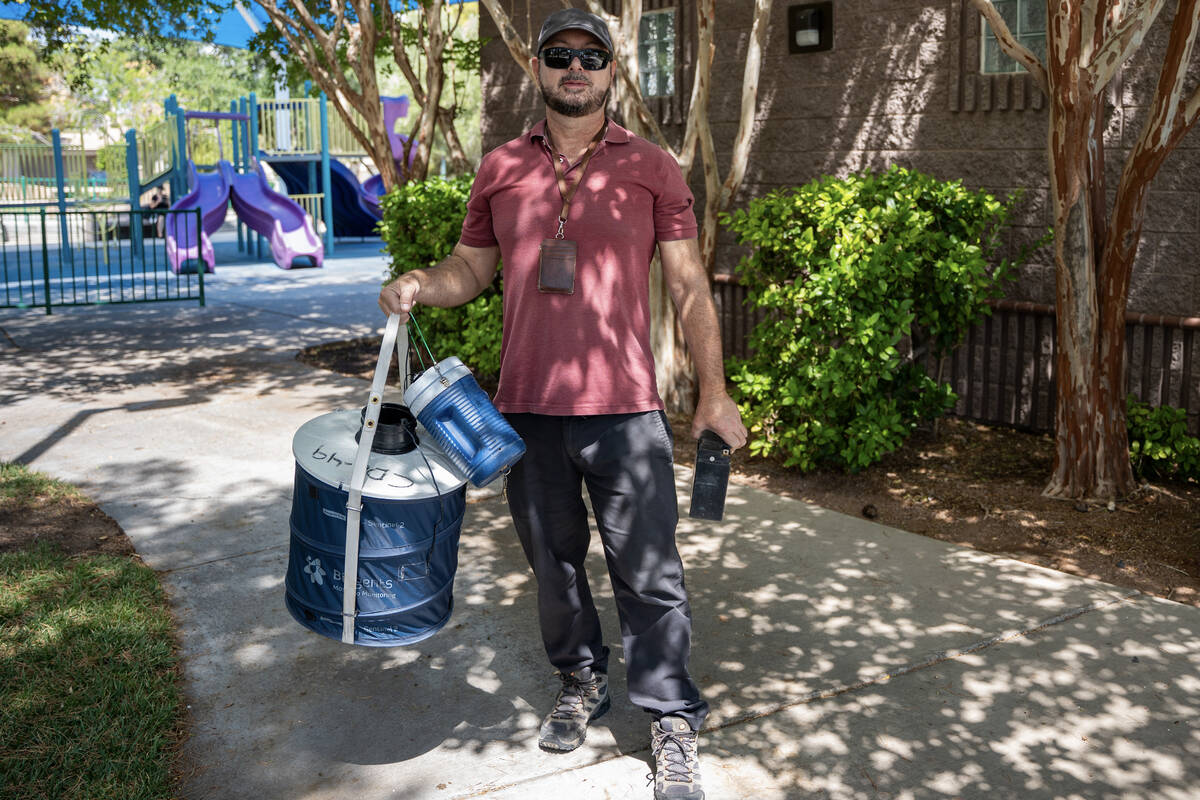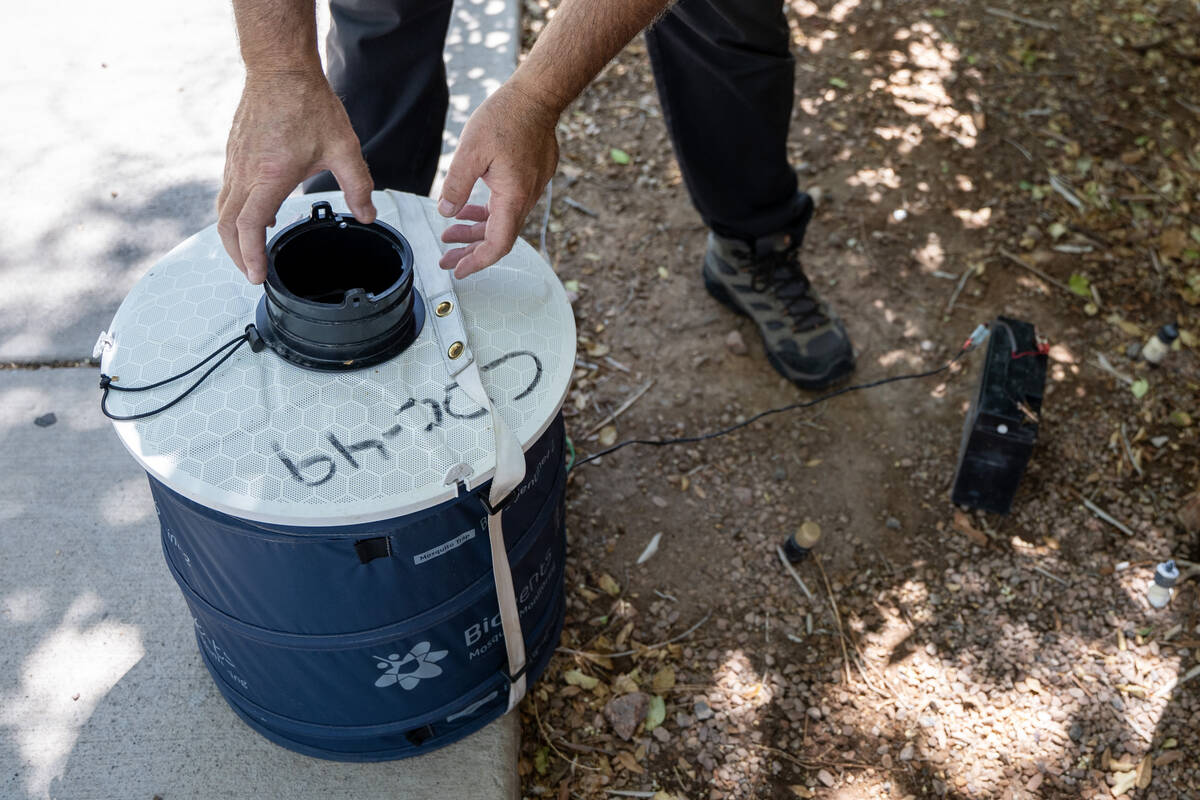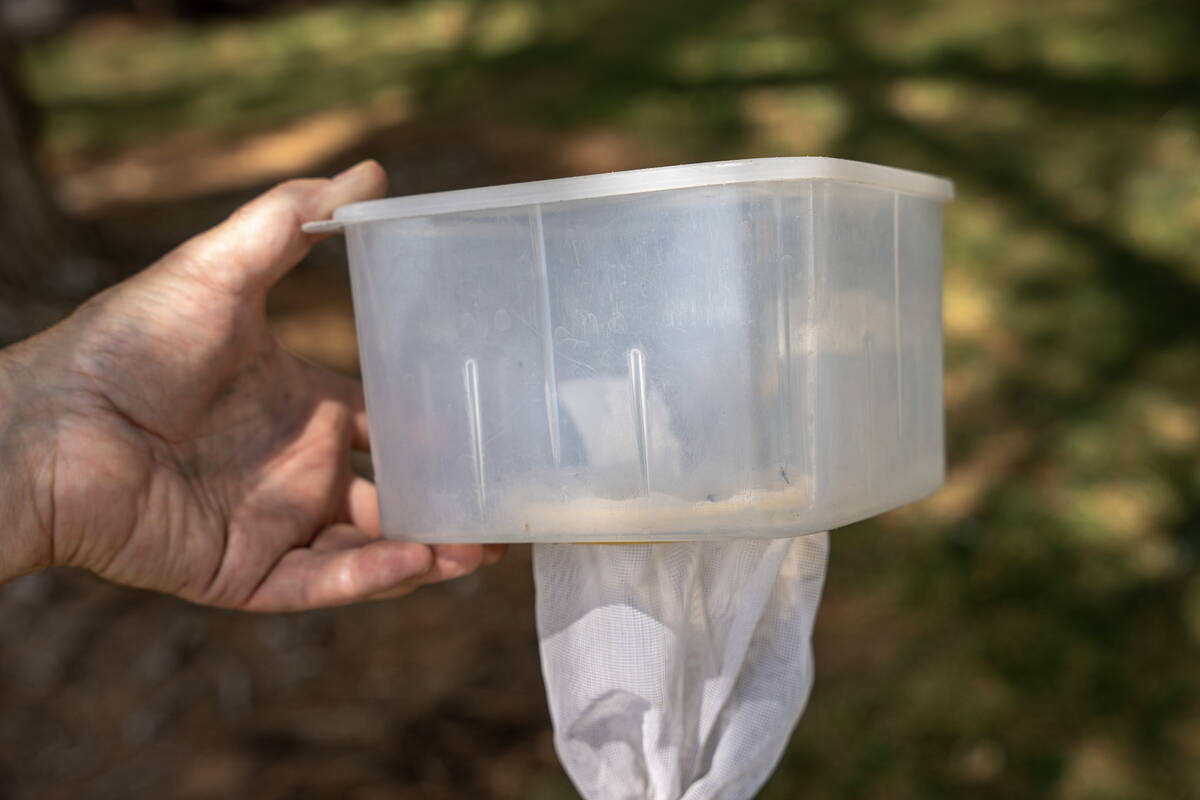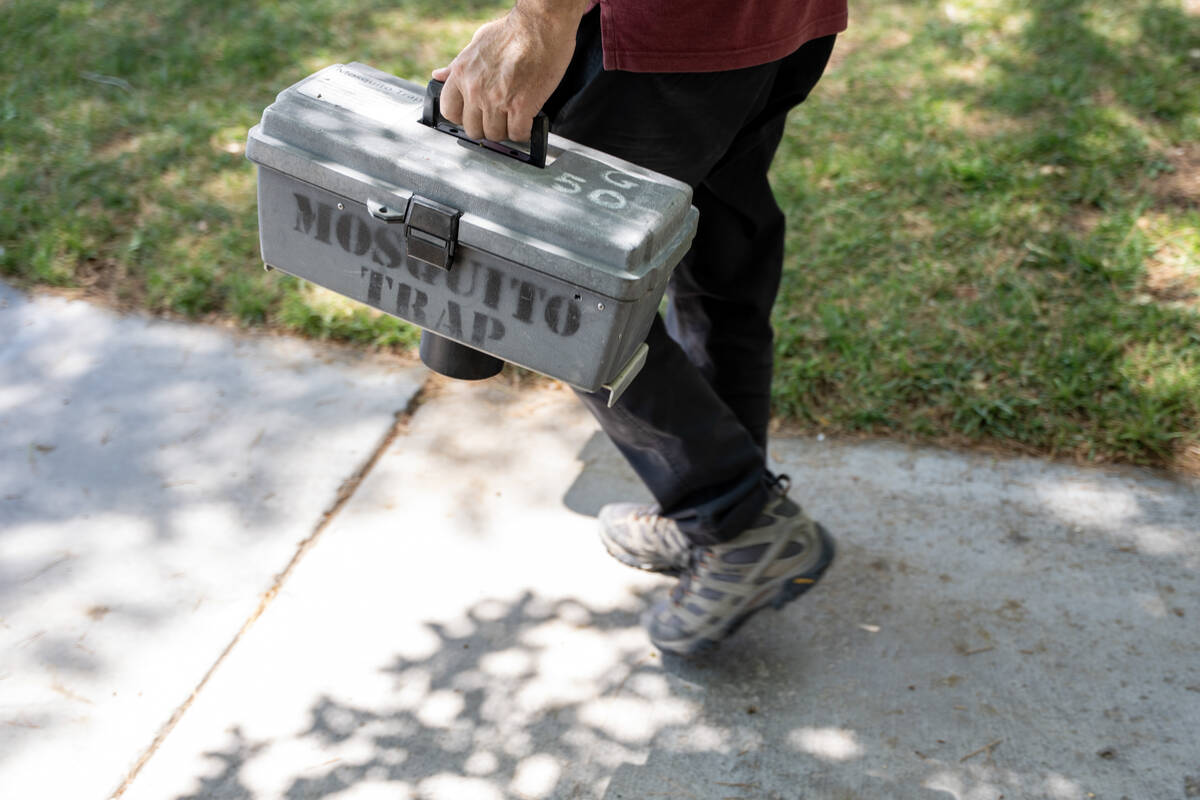‘Feeling itchy’: Public health experts eye control district as mosquitoes swarm Summerlin
As Clark County’s mosquito population grows each summer, an increasing number of valley residents are reporting mosquito sightings in their neighborhoods.
Summerlin appears to be getting hit particularly hard by the irritating pests. With ample water installations such as decorative ponds and golf course water hazards, researchers at UNLV’s Parasitology & Vector Biology Lab have said the master-planned community has created places for mosquitoes to breed and thrive.
Mosquitoes can cause more than just itchy bumps. They serve as vectors for disease and can carry viruses that kill hundreds of thousands of people around the world every year. The health district found mosquitoes carrying West Nile virus this summer, but has not reported any human cases of the disease this year.
Public health officials and advocates for a more coordinated mosquito control strategy said public officials have so far been skeptical of the need for a taxpayer-funded abatement district. But without a region-wide plan, they argue, mosquitoes will continue to flourish and embed themselves in all parts of the Las Vegas Valley.
A ‘shocking’ increase
Trapping data, citizen complaints and pest control company leaders all point to Summerlin as the area bearing the brunt of the valley’s mosquito boom.
Barring the ZIP code containing the Wetlands, Summerlin South has had the most traps out of any single Clark County ZIP code as of Sept. 5, according to health district data. Vivek Raman, environmental health supervisor at the health district, said citizen complaints have primarily driven where they have placed traps this year.
One Summerlin man, Lam Xuan, said frequent mosquito bites have left scars on his legs. Darkened spots caused by excessive itching after bites speckle the skin around his calf.
As a resident of Summerlin for more than 20 years, Xuan said he never encountered mosquitoes in the area until last summer. He has purchased electric zappers, hung Raid fly ribbons in his house and applied coconut oil to his legs to try and prevent mosquito attacks.
“It can be annoying,” Xuan said. “It can be very uncomfortable feeling itchy.”
Xuan’s experience is one of many in Summerlin, the spot where some pest control companies said they have seen a rise in requests for mosquito control.
Johnny Longhurst, operations manager at JS Pest Control, said people requesting mosquito control services were rare in his 37-year career until 2023 when a “shocking” number of people started calling the company’s office complaining about mosquitoes.
“We got another call, and then another call, and I was like, ‘What is going on here?’ ” Longhurst said. “I think, in the industry, everybody was kind of confused on what to do because we’ve never had to treat for them before.”
Among the over 400 customers Longhurst said receive mosquito control services from JS Pest Control, he estimated that over 80 percent live in Summerlin and the northwest part of the valley. Mike Boyle, chief people officer at Burns Pest Elimination, said his company has seen a similar demand for mosquito abatement in those areas.
One factor driving increased mosquito complaints across the valley, Raman said, is the growing Aedes aegypti population. Aedes aegypti is an aggressive and invasive mosquito species that prefers to feed on humans and causes harsh skin reactions. Since 2017, when the species was first spotted in southern Nevada, they have spread to 48 ZIP codes in Clark County.
Finding a ‘cleaner, simpler way’
Public health experts said they have long supported establishing a mosquito abatement district in Clark County to tackle the threats a growing mosquito population poses. But until recently, they said public officials have been reluctant to adopt such a sweeping change.
Local municipalities only conduct mosquito control on public lands. An abatement district could establish a coordinated mosquito control strategy and conduct environmental management with insecticides on private property to mitigate breeding and reduce the pest’s population.
Although the valley’s mosquito population is increasing, Raman said convincing local officials to adopt a control district has been tricky because rates of mosquito borne disease vary from year to year. For instance, the health district reported 26 human cases of West Nile virus last year, but none so far this year. When local governments then decide where to allocate limited funding, Raman said mosquito control can often fall by the wayside.
“It’s a real challenge to try to balance it all, and I just think that mosquito disease has just not shown itself to be, unfortunately, a very high priority for any political agenda,” he said.
The Clark County Board of Commissioners has the power to propose an abatement district, which residents could then vote on to determine whether to establish it. Funding for a new district would likely come from additional property taxes. Mosquito control districts exist in Douglas and Churchill counties in northern Nevada, and existing laws could be used to create one in Clark County.
David Brown, a special project coordinator for the American Mosquito Control Association, said local abatement advocates and commissioners are preparing to meet and talk about the possibility of proposing a control district. As a former mosquito control district manager in Sacramento, Brown said he is excited for discussions around the topic in Las Vegas to begin.
“We’re starting to see some of the things that we were always concerned about by not having a comprehensive agency because we’re starting to see some potential pesticide resistance in some of the mosquito populations,” Brown said. “A control district would have the means of monitoring that and then taking steps to change it.”
Raman, Brown and Louisa Messenger, an assistant professor at UNLV’s School of Public Health who studies mosquitoes, all agreed that creating a county-wide abatement district would be a major step in decreasing the pest’s population size and mitigating risks of mosquito borne illnesses.
The initiative has seen support from some Clark County residents as well. After circulating a survey about mosquitoes to community members, Messenger said most of the over 650 respondents said they were interested in paying $20 to $40 more in taxes each year to fund region-wide abatement services.
“It’s just a kind of cleaner, simpler way to do things from a scientific point of view,” she said. “It really would have been good to have done this five years ago while Aedes aegypti was more confined.”
Contact Spencer Levering at slevering@reviewjournal.com or 702-383-0253.
























